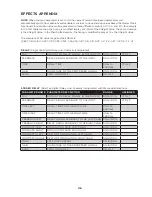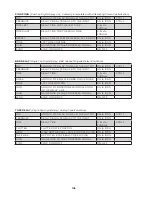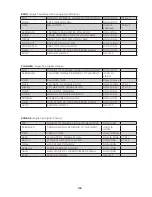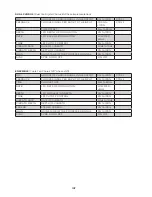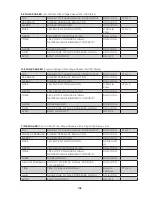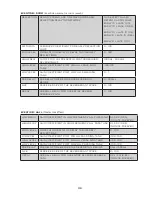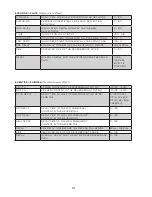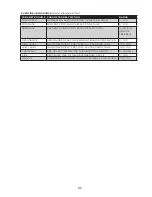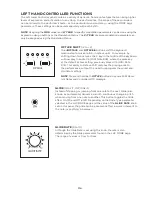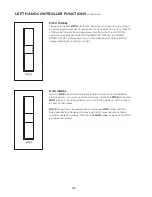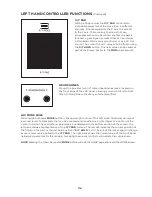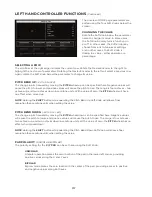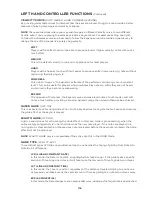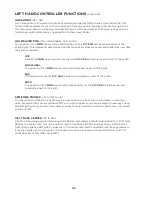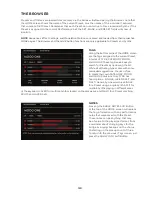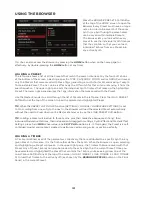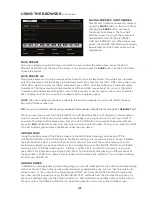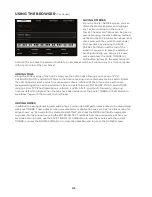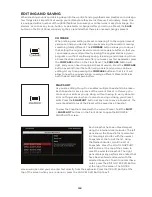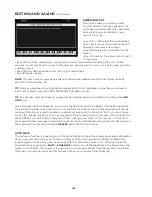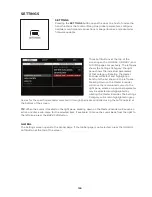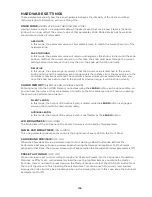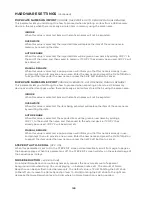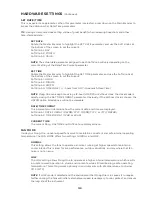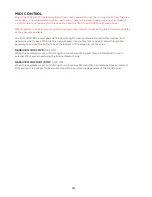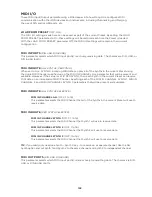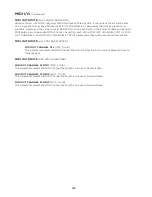
118
LEFT HAND CONTROLLER FUNCTIONS
(Continued)
VELOCITY CURVE
(SOFT, MEDIUM, HARD, COMPRESS, EXPAND)
By providing selectable curves to interpret how the keys are played, Moog One can provide a better
measure of playing technique and velocity response.
NOTE
: There are situations where you may wish to apply a different Velocity curve to two different
Synths, even if you are playing the same keys inside a single Preset. For example, setting one Synth
to follow the Compress curve and a second to follow the Expand curve will provide a dynamic way to
change the mix of the sounds live, solely using velocity.
SOFT
Players with a softer touch will be able to produce louder (higher velocity) notes without as
much effort.
MEDIUM
This is the default velocity curve, and is appropriate for most players.
HARD
Players with a heavier touch will find it easier to produce softer (lower velocity) notes without
restraining their playing style.
COMPRESS
This option “reigns in” the dynamic extremes of the performer, producing a more constant
level. This can be useful for players who sometimes play notes so softly they are not heard,
and so loudly they become overpowering.
EXPAND
The opposite of Compress, the Expand curve can make loud notes a touch louder, and soft
notes a touch softer, providing a broader dynamic range than would otherwise be achieved.
GATED GLIDE
(OFF, ON)
This is a special case for using Glide. When On, the keyboard acts as a gate that will pause and resume
the glide effect as the key(s) is played.
LEGATO GLIDE
(OFF, ON)
Again, a special case for articulating the Glide effect. In this case, Glide is produced only when the
notes are played legato-style (one is held down as the new note plays). If the notes are played in a
non-legato, or staccato fashion (the previous note is released before the new note is played), the Glide
effect will not be produced.
NOTE
: LEGATO GLIDE only is only available if the active Synth is in the MONO Mode.
GLIDE TYPE
(LCR, LCT, EXP)
Three distinct types of Glide are provided, and each one handles the timing of gliding from Note A to
Note B a bit differently.
LCR (LINEAR CONSTANT RATE)
In this mode, the Rate is constant, so gliding further takes longer. If the glide takes a specific
amount of time to go one octave, it will take twice that amount of time to glide two octaves.
LCT (LINEAR CONSTANT TIME)
In this mode, the Time is constant, regardless of the distance traveled. Gliding to a note one
octave away will take exactly the same amount of time as gliding to a note two octaves away.
EXP (EXPONENTIAL)
In this mode, the Rate changes over an exponential curve, slowing as the target note is approached.
Summary of Contents for One
Page 2: ......
Page 6: ...This page left intentionally blank ...
Page 103: ...103 This page left intentionally blank ...
Page 113: ...113 This page left intentionally blank ...
Page 127: ...127 This page left intentionally blank ...
Page 146: ...146 ...

